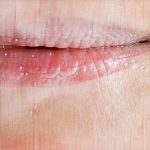The skin, often considered our largest organ, is far more than just a barrier against the external world. It’s a complex ecosystem reflecting overall health, and increasingly, research points to a profound connection between the state of our gut – specifically its microbial inhabitants – and the condition of our skin. For years, dermatologists focused primarily on topical treatments for conditions like acne, rosacea, eczema, and psoriasis. While these remain important, there’s growing recognition that addressing internal factors, particularly the gut microbiota, can significantly impact skin health and potentially offer more lasting solutions. The gut microbiota isn’t merely a collection of bacteria; it’s a dynamic community influencing immune function, inflammation levels, nutrient absorption, and even hormone regulation – all processes intimately linked to skin physiology.
This burgeoning field of study, often termed the ‘gut-skin axis’, explores bidirectional communication between the gastrointestinal tract and the skin. It’s not a one-way street; what happens in the gut impacts the skin, and conversely, skin health can influence gut microbial composition. Factors like diet, stress, antibiotics, and environmental exposures disrupt this delicate balance, leading to dysbiosis—an imbalance in the gut microbiome—which is now being implicated as a contributing factor in several dermatological conditions. Understanding the link between liver health can also play a role, given the liver’s detoxification processes. Understanding this intricate relationship empowers individuals to take a more holistic approach to skin health, moving beyond surface-level treatments towards nurturing internal wellness.
The Gut Microbiota and Acne Vulgaris
Acne vulgaris isn’t simply a teenage problem; it affects people of all ages and is characterized by inflamed or non-inflamed lesions – including blackheads, whiteheads, pimples, cysts, and nodules. Traditional acne treatment often revolves around reducing sebum production, unclogging pores, and fighting Propionibacterium acnes (now reclassified as Cutibacterium acnes) bacteria on the skin’s surface. However, recent research suggests that gut dysbiosis can exacerbate acne by increasing systemic inflammation and altering hormone levels. A compromised gut barrier, often resulting from an unhealthy microbiome, leads to “leaky gut” – increased intestinal permeability – allowing bacterial products to enter the bloodstream, triggering an immune response and promoting inflammation throughout the body, including the skin. The link between food reactions can also contribute to this inflammatory process.
The link between gut health and acne extends beyond inflammation. The gut microbiota plays a crucial role in regulating insulin sensitivity. A dysbiotic gut can contribute to insulin resistance, leading to higher levels of insulin-like growth factor 1 (IGF-1). IGF-1 stimulates sebum production and keratinocyte proliferation – key factors in the development of acne lesions. Furthermore, the gut microbiome influences estrogen metabolism through a process called the estrobolome. An imbalance here can lead to elevated androgen levels, also contributing to increased sebum production. – Dietary choices significantly affect this axis; diets high in processed foods, sugar, and unhealthy fats are associated with decreased microbial diversity and increased inflammation.
Consider these points when looking at the gut-acne connection:
– A diverse gut microbiome is generally correlated with reduced acne severity.
– Probiotic supplementation (with carefully selected strains) may help reduce inflammation and improve skin barrier function in some individuals, though more research is needed.
– Dietary changes focusing on whole foods, fiber, and fermented foods can promote a healthier gut microbiome.
The Gut Microbiota and Rosacea
Rosacea presents differently than acne; it’s characterized by facial redness, visible blood vessels (telangiectasia), papules, pustules, and sometimes ocular symptoms. While the exact cause of rosacea remains unclear, immune dysregulation and inflammation are central to its pathology. Similar to acne, gut dysbiosis appears to play a significant role in triggering and exacerbating rosacea symptoms. Individuals with rosacea often exhibit altered gut microbial composition compared to those without the condition – frequently showing reduced diversity and an overgrowth of certain bacterial species. This imbalance can contribute to increased intestinal permeability, leading to systemic inflammation and heightened immune reactivity. Gut inflammation and diarrhea often go hand in hand, indicating a broader inflammatory state.
The interplay between gut health and rosacea is complex. Some studies suggest a correlation between small intestinal bacterial overgrowth (SIBO) and rosacea flare-ups. SIBO occurs when excessive bacteria accumulate in the small intestine, interfering with nutrient absorption and producing gas that can cause bloating and discomfort – but also contributing to systemic inflammation. Furthermore, the gut microbiome influences histamine levels. Certain gut bacteria produce histamine, and imbalances can lead to elevated histamine levels, which are implicated in rosacea pathogenesis. – Dietary factors play a significant role here too; foods high in histamine or those triggering histamine release may worsen symptoms for individuals sensitive to histamine.
The Role of Short-Chain Fatty Acids (SCFAs)
Short-chain fatty acids (SCFAs) are metabolic byproducts produced when gut bacteria ferment dietary fiber. They’re not just waste products, though; they’re vital signaling molecules with far-reaching effects on health, including skin health. SCFAs – such as butyrate, propionate, and acetate – have anti-inflammatory properties, strengthen the gut barrier, modulate immune function, and even influence skin barrier integrity. A diet lacking in fiber leads to reduced SCFA production, compromising these protective mechanisms.
Butyrate, in particular, has garnered significant attention for its role in reducing inflammation and enhancing gut barrier function. It’s the primary energy source for colonocytes (cells lining the colon) and helps maintain gut homeostasis. Increasing dietary fiber intake – from sources like fruits, vegetables, legumes, and whole grains – is a key strategy for boosting SCFA production and supporting both gut health and skin health. – Prebiotic foods, which selectively feed beneficial gut bacteria, can further enhance SCFA production. Intestinal gas and skin rashes may also be connected to imbalances in the microbiome.
Dietary Interventions for Gut-Skin Health
The food we eat directly influences the composition of our gut microbiome. A diet rich in processed foods, sugar, and unhealthy fats promotes dysbiosis, while a whole-food based diet supports microbial diversity and functionality. Adopting dietary strategies specifically aimed at improving gut health can have a positive impact on skin conditions like acne and rosacea. Here’s a step-by-step approach:
- Increase Fiber Intake: Aim for 25-35 grams of fiber per day from sources like fruits, vegetables, whole grains, legumes, and nuts/seeds.
- Incorporate Fermented Foods: Regularly consume fermented foods like yogurt (with live cultures), kefir, sauerkraut, kimchi, kombucha, and miso – these introduce beneficial bacteria to the gut.
- Limit Sugar and Processed Foods: Reduce intake of sugary drinks, refined carbohydrates, processed snacks, and fast food. These feed harmful bacteria and promote inflammation.
- Stay Hydrated: Adequate hydration is essential for optimal gut function and nutrient absorption.
Probiotics & Skin Health: A Cautious Approach
Probiotic supplementation has gained popularity as a potential treatment for various health conditions, including skin disorders. However, it’s crucial to approach probiotics with caution – not all strains are created equal, and the benefits can vary significantly depending on the individual and the specific probiotic used. While some studies have shown promising results in reducing inflammation and improving skin barrier function with certain probiotic strains, others have found no significant benefit or even adverse effects. The link between gut pain can sometimes be exacerbated by poorly chosen probiotics.
- The key is strain specificity. Different strains of probiotics exert different effects. For example, Lactobacillus rhamnosus GG has been studied for its potential to reduce acne inflammation, while some Bifidobacterium strains may help improve skin barrier function.
- It’s important to consult with a healthcare professional before starting any probiotic supplementation – especially if you have underlying health conditions or are taking medications. Self-treating can be detrimental.
- Probiotics are most effective when combined with dietary changes that support a healthy gut microbiome. They’re not a quick fix but rather one component of a holistic approach to gut-skin health. Menstrual cycle phases can also influence the effectiveness of probiotics and dietary interventions.


















